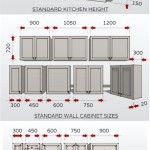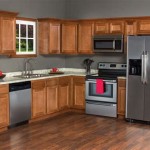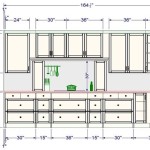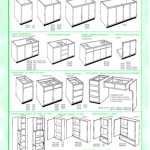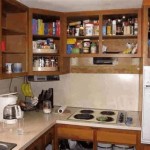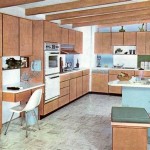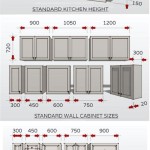Kitchen Storage Cabinets DIY
Maximizing kitchen storage is a common goal for homeowners. Do-it-yourself (DIY) kitchen storage cabinet projects offer a cost-effective and customizable solution to optimize space and improve organization. Whether looking to add new cabinets, modify existing ones, or build entirely from scratch, understanding the process and available options can lead to successful results.
Planning is crucial for any DIY cabinet project. Begin by thoroughly assessing current storage needs and identifying areas for improvement. Consider the types of items needing storage, their frequency of use, and the available space. Accurate measurements of the designated area are essential for determining cabinet dimensions and ensuring a proper fit. Sketching a layout can help visualize the finished product and identify potential challenges beforehand.
Selecting appropriate materials is another key factor. Common cabinet construction materials include plywood, medium-density fiberboard (MDF), and particleboard. Plywood offers durability and strength, while MDF provides a smooth surface ideal for painting. Particleboard is a budget-friendly option but may be less resistant to moisture. Choosing the right material depends on the project's budget and desired aesthetic.
Building kitchen cabinets requires specific tools. Essential tools include a circular saw, jigsaw, drill, measuring tape, level, safety glasses, and hearing protection. Other helpful tools include a table saw, router, and nail gun. Ensuring access to necessary tools before starting the project can prevent delays and ensure efficient construction.
Constructing the cabinet boxes involves cutting the chosen material to the determined dimensions. Assemble the boxes using wood glue and screws, ensuring square corners and tight joints. Reinforcing the joints with corner braces can add extra stability. The back of the cabinet can be made from thinner material, such as plywood or hardboard, and attached using nails or staples.
Cabinet doors and drawers significantly impact the overall appearance and functionality. Various door styles exist, including shaker, raised panel, and flat panel. Doors can be purchased pre-made or built from scratch using similar techniques as the cabinet boxes. Drawer construction involves creating a box with a bottom and sides, typically using dovetail joints for strength. Drawer slides are essential for smooth operation and can be chosen based on desired functionality and load capacity.
Installing the cabinets requires careful attention to detail. Wall cabinets should be securely mounted to the wall studs using appropriate screws and brackets. Base cabinets typically rest on the floor and can be leveled using shims. Ensuring accurate measurements and level installation is vital for achieving a professional finish.
Finishing touches complete the project and enhance the cabinets' appearance. Painting or staining protects the wood and provides a desired aesthetic. Cabinet hardware, such as knobs and pulls, adds functionality and style. Choosing hardware that complements the kitchen's overall design can create a cohesive look.
Several DIY cabinet project ideas can inspire and guide customization. Open shelving can provide easy access to frequently used items and create a modern feel. Adding pull-out drawers or shelves within cabinets maximizes storage space for smaller items. Building custom spice racks or utensil organizers can further enhance organization and efficiency.
Numerous online resources and tutorials offer step-by-step instructions and helpful tips for DIY kitchen cabinet projects. Researching different approaches and techniques can provide valuable insights and help avoid common mistakes. Joining online communities or forums dedicated to woodworking and DIY projects can offer opportunities for sharing experiences and seeking advice from experienced individuals.
Modifying existing cabinets presents an alternative to building from scratch. Refacing existing cabinets involves replacing the doors and drawer fronts while keeping the existing cabinet boxes. This approach can update the kitchen's appearance at a lower cost than complete replacement. Adding new hardware or repainting the cabinet boxes can further enhance the transformation.
Repurposing existing materials or furniture can be a sustainable and creative approach to DIY kitchen cabinets. Old furniture, such as dressers or chests, can be adapted and transformed into unique and functional kitchen storage solutions. Reclaimed wood can add character and a rustic aesthetic to the kitchen.
Considering the available budget and skill level is essential when planning a DIY kitchen cabinet project. Simple projects, such as adding shelves or modifying existing cabinets, may require fewer tools and less experience. More complex projects, such as building cabinets from scratch, may necessitate advanced woodworking skills and specialized tools. Realistically assessing capabilities and resources can help ensure a successful and satisfying outcome.
Safety should always be a top priority during any DIY project. Wearing appropriate safety gear, such as eye protection and hearing protection, is crucial. Following manufacturer instructions for power tools and using proper techniques can prevent accidents. Maintaining a clean and organized workspace can also minimize risks.

Wardrobe Into A Kitchen Pantry The Sarah Challenge

3 Easy Diy Kitchen Organization Projects Basic Tools

Build A Pantry Part 1 Cabinet Plans Included The Diy Village

Easy Diy Kitchen Cabinet Organization Ideas Angela Marie Made

Diy Wall Cabinets With 5 Storage Options Organization

60 Innovative Kitchen Organization And Storage Diy Projects

Diy Freestanding Kitchen Pantry Cabinet Jaime Costiglio

Barnhouse Before After Diy Dream Pantry I

Diy Wall Cabinets With 5 Storage Options Plans Fixthisbuildthat

Diy Kitchen Pantry Myoutdoorplans

